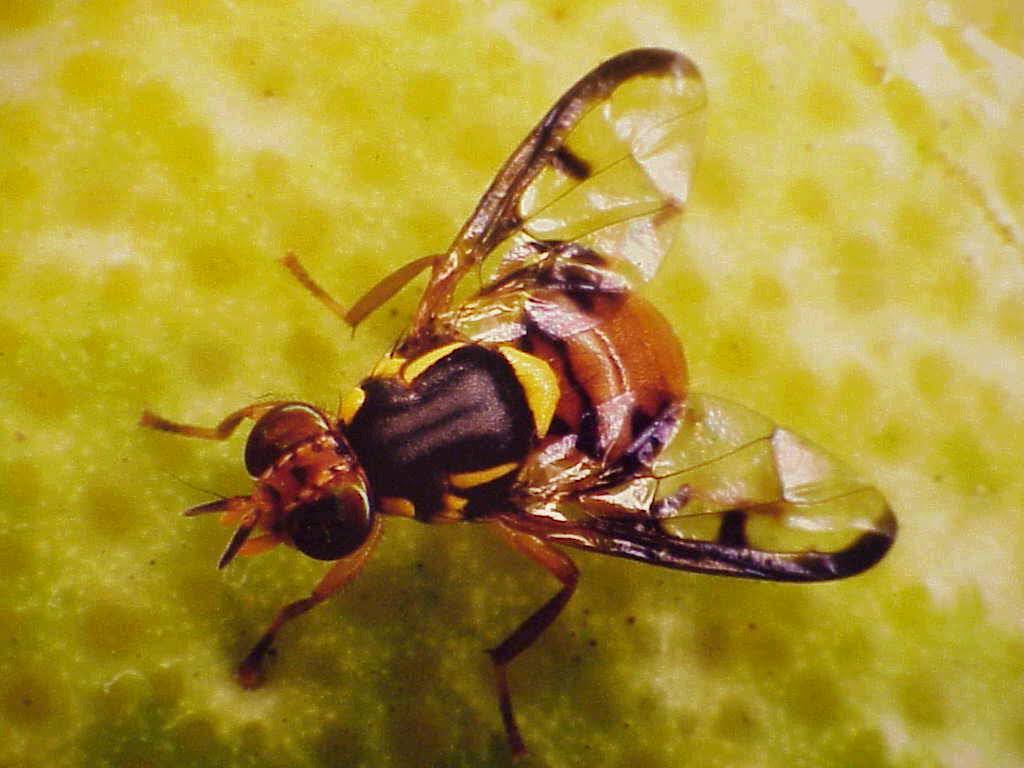
14 Jun FAQs About Fruit Flies and Pest Control
Does your home have a fruit fly infestation? These nuisance invaders can pop up suddenly in the kitchen, the garbage bin, a basement, or another similar space. If these common pests are making your home their own, take a look at what you need to know about fruit flies, identification, extermination, prevention, and more.
What Are Fruit Flies?
These small-sized gnat-like pests are also known by the scientific name drosophila melanogaster. The oval-shaped flies average ⅛ of an inch in size, and have wings, antennae, and six legs, according to the National Pest Management Association’s Pest World website.
Why Do Fruit Flies Come Into Homes?
As the name implies, these flies enjoy fruit. But this isn’t the only food source the drosophila melanogaster chooses. Along with bananas, melons, grapes, and other sweet fruit picks, the tiny flies will also eat squash, potatoes, onions, and almost any other similar perishable product that you leave on the kitchen counter or in an open pantry.
You may also find these pests in the trash can or inside used empty beverage bottles. Some fruit flies will also fly or crawl into kitchen sink drains and garbage disposals to feast on leftover food debris.
Unlike ants and other foraging pests, fruit flies won’t tunnel their way inside your home through walls. Instead, these gnat-like creatures will use their wings to fly into the kitchen (or another similar area of the home) through an open window or door.
Not only will fruit flies eat leftover perishables, but they will also use your home to breed and populate new generations. Fruit flies can lay up to 500 eggs at one time, according to the University of Kentucky. This pest’s life cycle is short and it can develop from an egg to an adult in just one week.
What Can You Do About Fruit Flies?
If you already see these flies buzzing around the partially rotten bananas on your kitchen counter or in the basement garbage bin, it’s too late to prevent an infestation. But this doesn’t mean you have to accept that the flies are now part of your household. Even though it’s easy for these pests to breed, it’s also easy to exterminate them—with the help of a professional.
Identification is the first step to elimination. Before you start the determination process, you need to make sure that fruit flies are the real culprit behind the pest problem. Other species of flies or gnats (such as drain flies) are small, have wings, and look similar to fruit flies. A pest control professional has the knowledge and experience to distinguish fruit flies from other invaders. This can help them to choose the best treatment possible.
Along with identifying the pest, the pro will also need to find the source of the infestation. This can stop the flies from breeding. The exterminator will need to remove or treat the breeding site and use an appropriate pest control product to exterminate the remaining fruit flies. The exterminator may need to do more than just treat the surface-level (or visible) infestation. If the flies have invaded the kitchen sink, drain, and garbage disposal, the pest control contractor will also need to address these areas.
How Can You Prevent A Fruit Fly Infestation?
After the exterminator has eliminated the breeding site and the fruit flies from your home, you may need to take steps to reduce the risks of a re-infestation. Seal cracks in entry points, such as doors and windows. This makes it more difficult for fruit flies to enter your home.
Put perishable fruits and vegetables inside containers or in the fridge, clean kitchen counters regularly, and remove garbage promptly. If the flies are in an open garbage can, swap out the bin for one with a tight-sealing lid or keep trash outside of your home.
Are fruit flies a problem in your home? Contact Eary Termite and Pest Services for more information about our expert pest control services.




Sorry, the comment form is closed at this time.